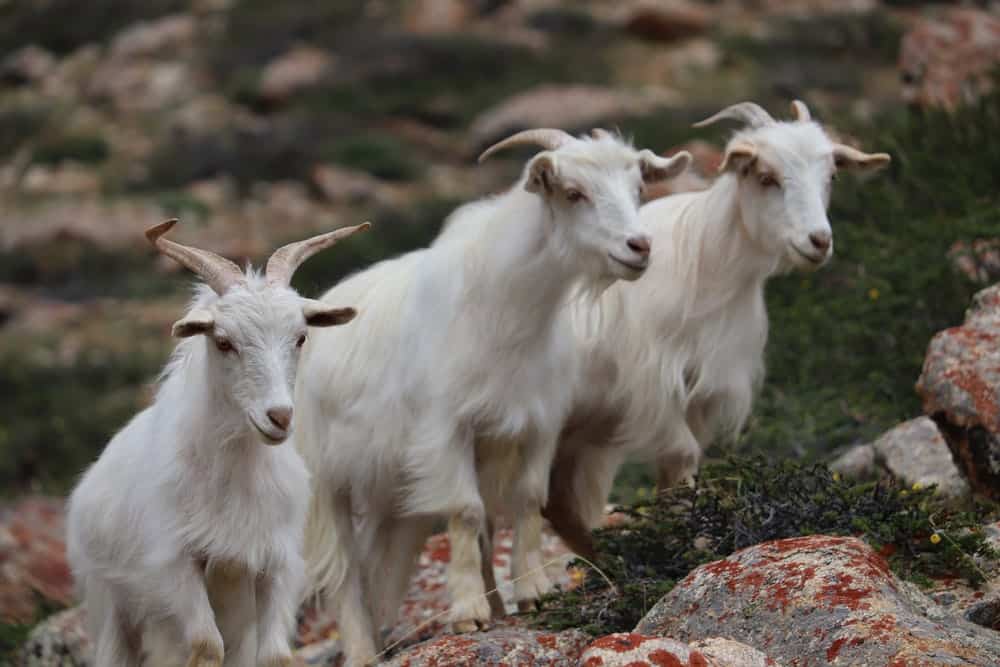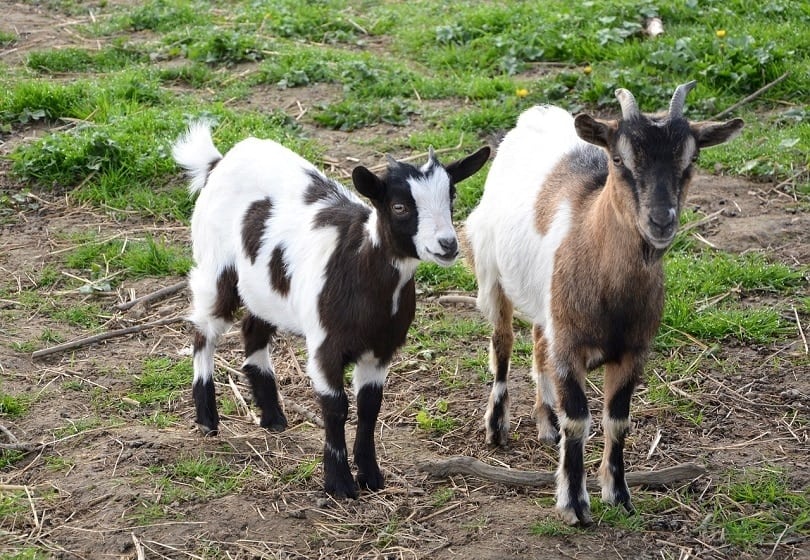Humans and goats have lived alongside each other for thousands of years. It’s believed that goats are one of the first animals to become domesticated, and this ancient relationship dates back to 8,000 BC1.
It’s impressive that goats and humans still live side by side all over the world. This relationship has a long and rich history that’s worth knowing, and it’ll give you an even greater appreciation for the goat.

Goats in Ancient Civilizations
The earliest domesticated goats were the Bezoar Ibex, which is a wild goat subspecies. They’re native to the Fertile Crescent, and it’s commonly believed that the first domesticated goats were located in western Iran. Researchers have gathered archaeological and genetic data that date to about 10,000 years ago. Fossils of goats could be found around the Zagros mountains, and the discovery of urine samples indicated areas where the earliest domesticated goats were kept in pens.

The Spread of Goats to Europe in 732 AD
Over thousands of years, domesticated goats made their way to Northern Africa. Then, a significant historical event incidentally introduced them to southern Europe. This occurred through the Battle of Tours, which took place in 732 AD.
When Charles Martel, the ruler of the Frankish kingdoms, defeated the Umayyad Caliphate’s leader, Abd ar-Rahman, the remaining Umayyad troops retreated to the south of France. As they were scrambling to retreat, one of the things that got left behind was the goats they were using for milk and cheese making.
These goats were captured by the Frankish troops, and their populations eventually spread to the rest of Europe.
European Explorers Introduce Domesticated Goats to the Americas
While domesticated goats are a common sight to see in the US, they’re not animals native to North America. Rare records of goat importations reveal that Spanish explorers and missionaries brought goats with them during their overseas excursions. They ventured through the southern and southwestern regions of the present-day US and were also shipped to the Channel Islands of California.
Other domesticated breeds of goats were introduced by English settlers. These goats were primarily used for dairy and are most likely descendants of the Old English Milk Goat.

Domesticated Goats in the 1900s
In 1903, the American Milch Goat Record Association (AMGRA) was founded by dairy goat breeders. AMGRA helped present a milch goat show at the 1904 World’s Fair in Saint Louis, Missouri. Eventually, AMGRA changed its name in 1964 to the American Dairy Goat Association.
Over the years, many more goat breeds were imported to the US. Some imported breeds are Angoras, Boers, and Kikos.
Current Status of Domesticated Goats
Today, there are about 450 million domesticated goats around the world. Goats are primarily used for their meat and milk. Their milk can be used for cheesemaking, and many people also use them for soaps and other skincare products.
Some goat breeds also grow luxurious coats and their fibers that can be spun into yarn for clothing and textiles. Other goat breeds are hardy grazers that can help clear fields, and their dung is also sometimes used as fuel for fires or fertilizer.
Many goats also become pets. They’re intelligent animals that also have the ability to relate to humans and can even be socialized and trained to be handled by children.


Conclusion
Goats have a long history with humans, and it doesn’t look like they’ll be going away any time soon. Domesticated goats have helped humans in many ways, and our world wouldn’t be the same without them. So, the next time you see a goat, make sure to take some time to appreciate it. It may be a common animal, but it’s truly remarkable and an invaluable contributor to human society.
Featured Image Credit: papaya45, Pixabay
